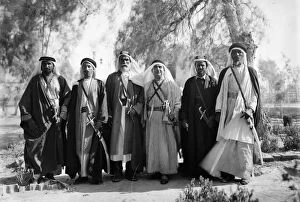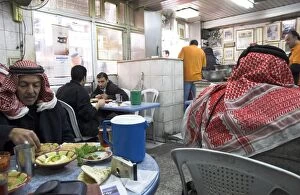Keffiyeh Collection (#3)
The keffiyeh, a symbol of tradition and culture, is worn by people across the Middle East
For sale as Licensed Images
Choose your image, Select your licence and Download the media
The keffiyeh, a symbol of tradition and culture, is worn by people across the Middle East. In Jordan, an old man proudly dons his keffiyah as he stands guard at one of the famed desert castles. The vibrant scarf complements the ancient beauty of Petra, where it is often seen adorning locals and tourists alike. In another corner of Jordan, an Arab flute player mesmerizes with his melodies, his keffiyah flowing in harmony with the music. As we venture towards Abu Dhabi, camel herders approach with confidence wearing their trusty keffiyehs to shield them from the scorching sun. Even members of the ruling Al Nayhan family find solace in its comforting embrace as they enjoy tea just outside their majestic palace. In a snapshot from history, Sheikh Shakhbut Bin-Sultan Al Nahyan showcases his regal presence while sporting a dignified white keffiyah in July 1965. Meanwhile, protesters wave Kuwaiti national flags passionately chanting for change and unity. Back in Amman's bustling market streets, an Arab man effortlessly blends into daily life as he purchases apples while draped in his signature black-and-white checkered keffiyah. This timeless accessory has transcended generations and continues to be cherished by all who wear it. Centuries ago, illustrations depicted brave riders atop camels adorned with colorful textiles like the iconic red-checked keffiyeh. Egyptian cavalrymen also relied on this versatile garment during their expeditions through sandy terrains. Artistic depictions further showcase its significance - whether it's an Arab plucking thorns from his foot or "The Distaff Worker" laboring diligently while wearing her trusted headscarf. The story behind each fold and pattern woven into every thread tells tales of resilience and cultural heritage that have stood strong throughout time. The keffiyeh remains more than just a piece of fabric.




